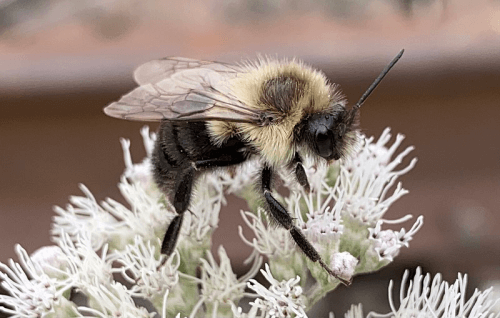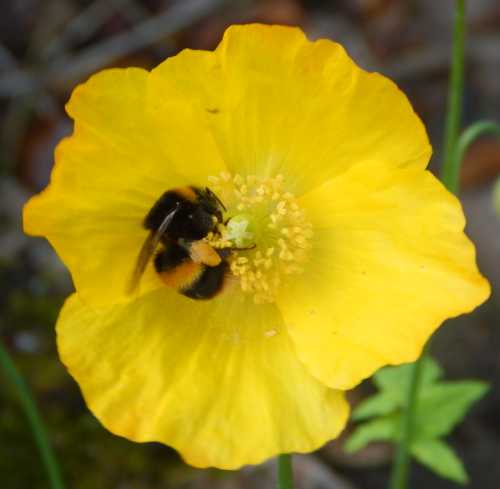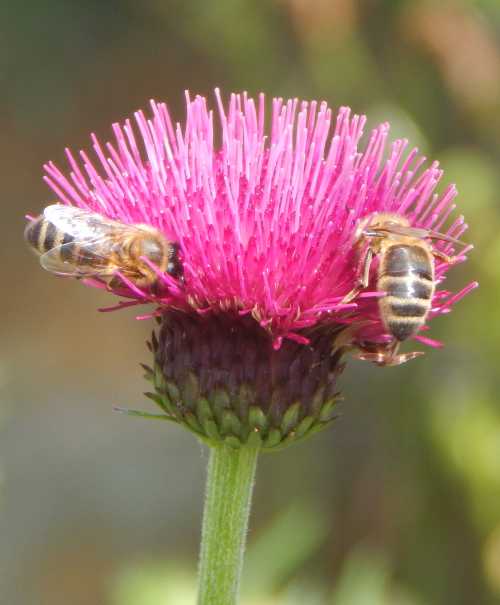What Are The Black Bumble Bees Called?
I received the following question from a visitor to my site:
Hi,
I was wondering, what are the large black bumble bees called? I keep seeing the odd one, and would love to know what it is.
Jean, USA.
Upon further investigation, it appeared that Jean's visitors were not bumble bees at all, but large carpenter bees.
Large Black Bumble Bees Or Large Carpenter Bees? The Difference
The Large Carpenter Bees are a group of bees belonging to the same bee family as bumble bees (Apidae) but a different genus (type).
Bumble bees belong to the genus Bombus, whereas Large Carpenter bees belong to the genus Xylocopa.
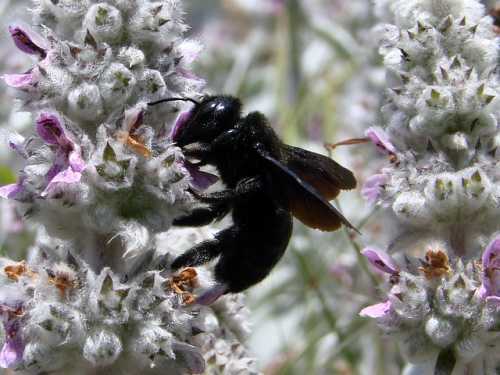 Carpenter Bee foraging on Lamb's Ear
Carpenter Bee foraging on Lamb's Ear
Large carpenter bees are easily mistaken for bumble bees. They are robust bees and a similar size to many bumble bee species.
Some carpenter bees with a pale ginger upper body (thorax) are especially easy to confuse with bumble bees.
In particular, the Large Carpenter Bee - Xylocopa virginica is easily mistaken for the Common Eastern Bumble Bee - Bombus impatiens. On close inspection, the bumble bee has a hairy abdomen, the abdomen of the carpenter bee is shiny.
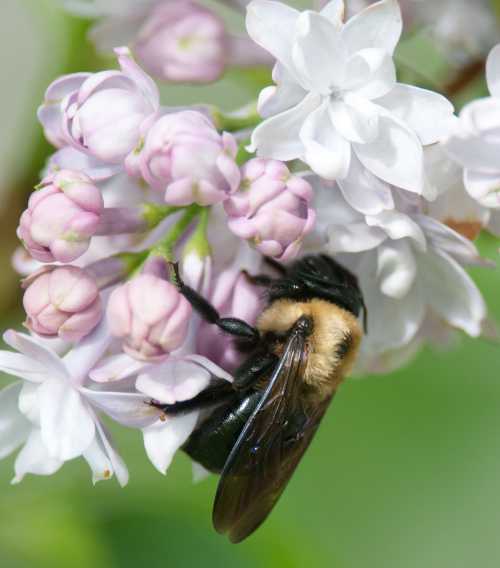 Large Carpenter Bee - Xylocopa virginica
Large Carpenter Bee - Xylocopa virginica
Depending on where in the world you live, you may be aware of more species, perhaps all black, or if you live in Europe, a carpenter bee species with iridescent violet hues, known as the Violet Carpenter Bee, Xylocopa violacea.
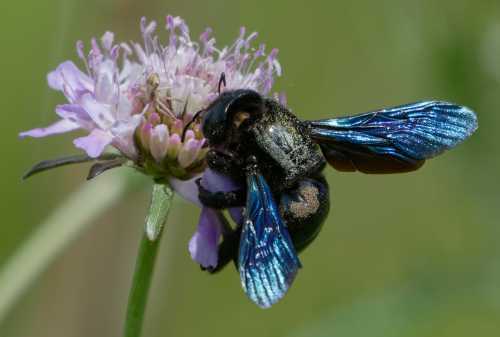 Violet Carpenter Bee
Violet Carpenter BeeKey differences between bumble bees and carpenter bees
Carpenter bees and bumble bees are quite different in their nesting habits. Carpenter bees are known for their nesting habits which sometimes involves chewing tunnels into wood.
Bumble bees either make their nests in pre-existing holes and crevices, or on top of grassy tufts.
As seen in the photographs above, the abdomen of large carpenter bees is often shiny, whereas the whole body of the bumble bee is furry (although some cuckoo species are less hairy, and hairs may be lost on aged, bedraggled bumble bees).
Are Carpenter Bees (Xylocopa) Good Pollinators?
Like bumble bees, Xylocopa are able to buzz pollinate.
Xylocopa can carry 'enormous' bushels of pollen because of their body size, according to the authors of The Bees In Your Backyard, Wilson & Messinger Carril. They state that they are good pollinators of many flowers.
They note that Xylocopa species are especially important pollinators in the deserts, and that they are valuable pollinators of crops such as passion fruit, Brazil nuts, cotton and tomatoes (Xylocopa are used in greenhouses in Australia, and ensure heavier fruits).
However, they are less beneficial as pollinators for some tubular flowers, and possibly blueberries, if they engage in nectar robbing. Nectar robbing is not uncommon in a variety of bee species.
For more information, see my page about nectar robbing.
Are there any species of bumble bee that are all black?
Indeed there are bee species that are predominantly black, and species which may produce all black specimens even if the species often features a band or tail of orange/red/yellow or white.
The Carpenter-mimic Leafcutter Bee
The Carpenter-mimic Leafcutter Bee is a leafcutter bee species which may, on first sighting, be misidentified as a carpenter bee.
Since it belongs to the leafcutter group and has entirely different nest building habits to carpenter bees.
Watch: a Carpenter-mimic Leafcutter Bee building a nest with segments of leaf.
Concerned about Carpenter bees in your garden?
If you are wondering how to deter these bees from your property, you might be interested to read about the experiences of other visitors to this site on my page about carpenter bees.
If you found this page helpful or interesting, I'd really be grateful if you would share it with others - if not this page, perhaps another, such as Gardening For Bees.
Thank you so much :) .
